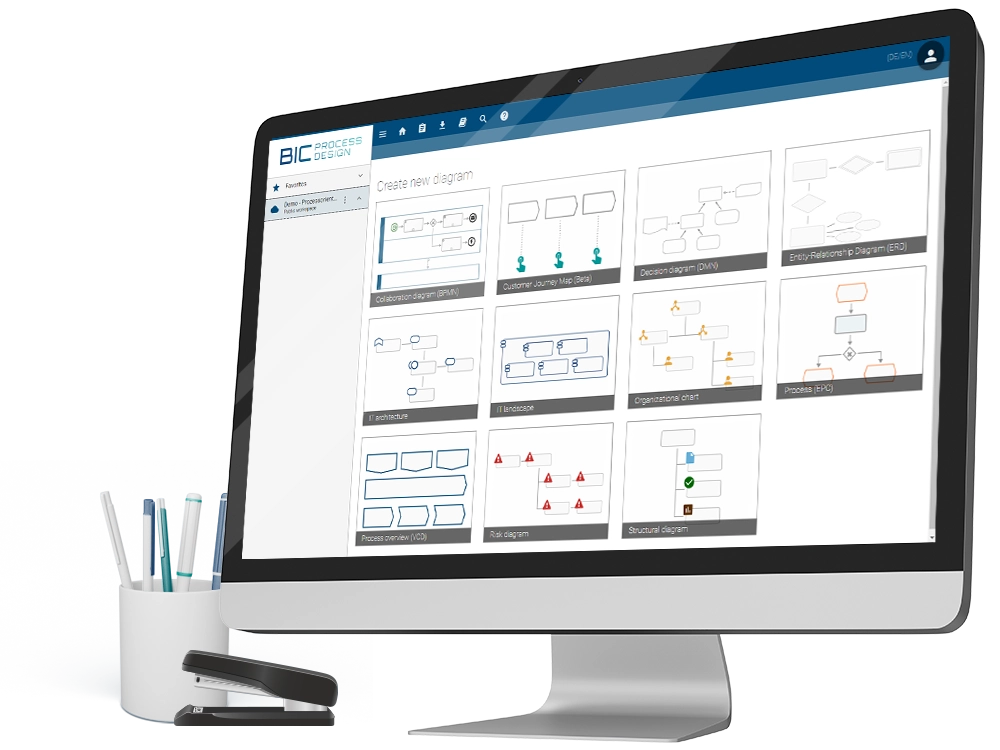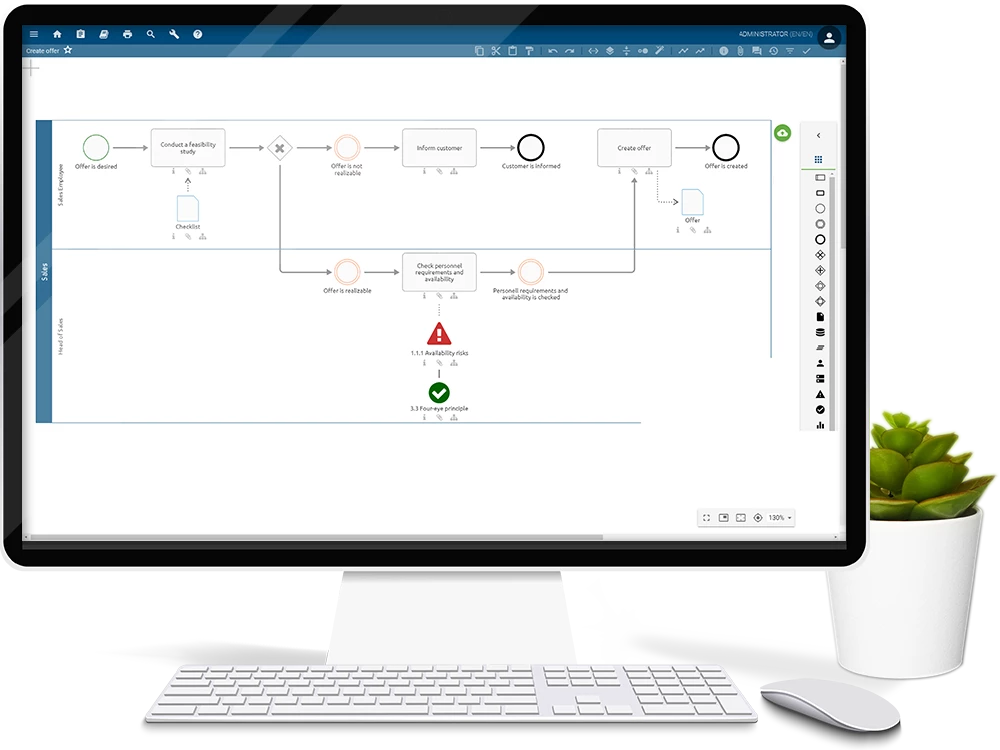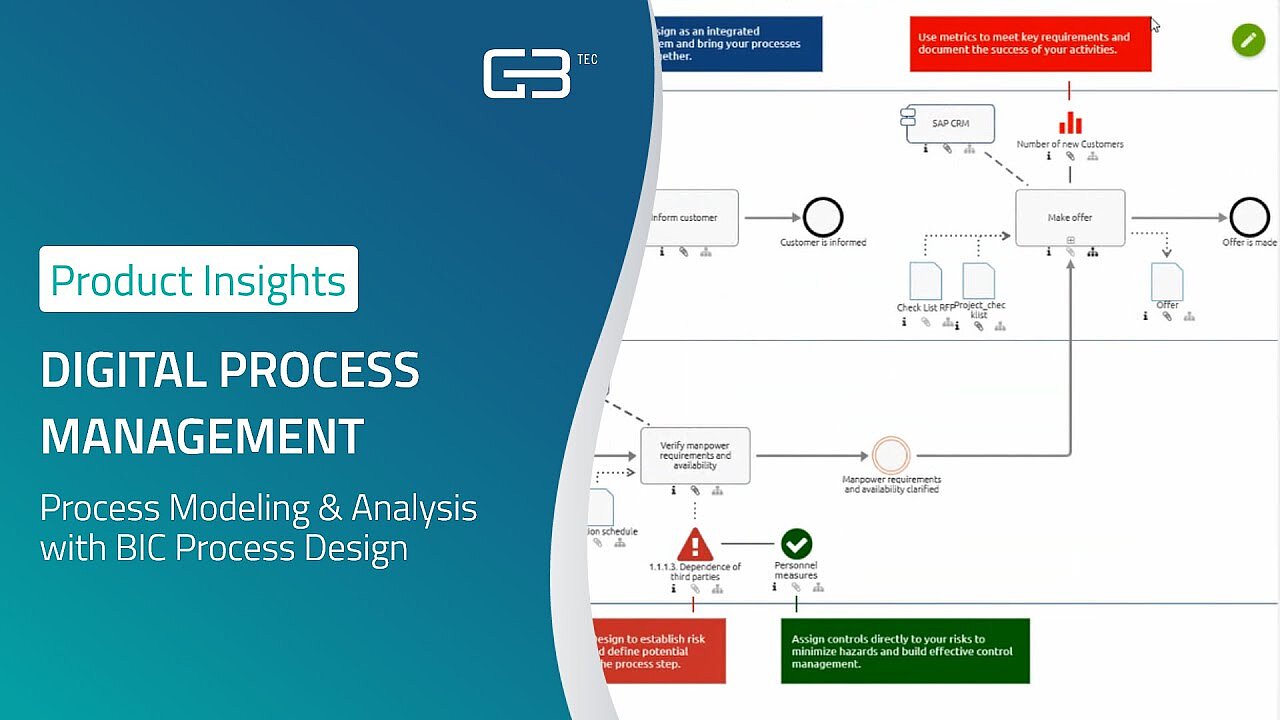BIC Process Design
Understand & Transform
Supercharge your business operations with the most intuitive AI-powered BPM software.
It seems that you come from a German speaking country. Here you can change the language
EnglishEveryday work in organizations is characterized by extensive tasks and complex processes. Often, aimlessness and chaos are the result. Due to the lack of transparency, organizational strategies can no longer be accomplished satisfactorily. Visual process modeling helps you to structure your daily work, optimize processes and thus achieve your goal faster.

In general, a process is defined as a sequence of activities in an organization to perform an operational performance. Accordingly, processes play a central role in the everyday work of companies by defining remits, documenting responsibilities and transparently illustrating procedures. Thereby, process modeling is a method and at the same time a relevant tool for capturing specific activities that are necessary for the implementation of individual business processes in organizations.
By illustrating complex processes using suitable business process modeling software, business processes can be mapped in a clear and intuitive way that is easily understandable for all participants.
The primary goal of modeling processes is to capture, document and visualize existing manual business processes. Get visible results quickly and develop improvement suggestions for your management. Reduce unnecessary working steps and establish targeted instructions. In addition to that, a data-based process analysis helps you to identify potential for optimization and thus reduces costs in the long run. This simplifies communication throughout the whole organization, accelerates processes and reduces overall costs in the long term. Companies benefit from the advantages of process modeling regardless of their size, industry or organizational form. By means of using a suitable tool for process modeling, you lay the foundations for rapid growth and the accomplishment of your business goals.
Requirements for business process modeling software are diverse. To live up to them and to implement targeted modeling, you can pick from various modeling notations and model types. The most common and internationally used forms are:


BIC Process Design optimally facilitates the modeling and the analysis of your business processes. With the help of this innovative modeling tool, you can intuitively capture your process models and enrich them with all relevant information, such as descriptions, documents, KPIs and much more.
Reliably detect weak points and gaps in your process landscape as well as IT and extrapolate previously unrecognized potential for optimization. Create high-end process manuals for your entire workforce as well as significant reports to easily analyze your processes at the touch of a button. In addition to that, comfortably communicate with all process participants via the integrated collaboration feature and incorporate them into the continuous improvement process.
Model your first business processes now with our 30-day free trial version and convince yourself of BIC Process Design.

Efficient design of business processes thanks to digital process management:
Modeling, analyzing, communicating or controlling processes is easy and intuitive with BIC Process Design.
The process landscape should be structured over several levels, from the overall picture to the details. Starting from the process map, which includes all process areas, it should be possible to navigate graphically across several levels into the detailed processes.
As part of business process management, the process landscape is structured over several levels. At Levels 1 to n, the process areas are refined, for example using Value Chain Diagrams (VCD), BPMN or EPC process diagrams. The number of levels varies depending on the department or the size of an organization.
Working with an SAP solution is standard practice in global corporations as well as in many SMEs. Modeling of the SAP IT landscape is of great importance not only for the introduction of the latest version - SAP S/4 Hana - but also for the support of an SAP system. A combined view of the SAP models with business processes allows to recognize mutual requirements at an early stage and to implement them purposefully. The entire structure of the SAP system is modeled using IT landscapes or IT architectures. Individual SAP components that are important for process steps can be directly anchored as application objects in the corresponding BPMN 2.0 models. This gives IT departments as well as the process management a quick overview of interactions between the SAP system and business processes.

CEO
Gregor, founder of GBTEC, is a leading expert in Business Process and IT Transformation. For over 20 years, he has been a key figure shaping the BPM world. His passion for designing efficient processes emerged during his studies in business informatics. As the mastermind behind the BIC Platform, Gregor and the GBTEC team develop a comprehensive software suite that covers the entire transformation cycle — from intelligent Business Process Management (iBPM) and Enterprise Architecture Management (EAM) to Digital Process Automation (DPA), Process Mining and Governance, Risk and Compliance (GRC).
Benefit from our numerous offers and learn more about the endless possibilities of process modeling with BIC Process Design.